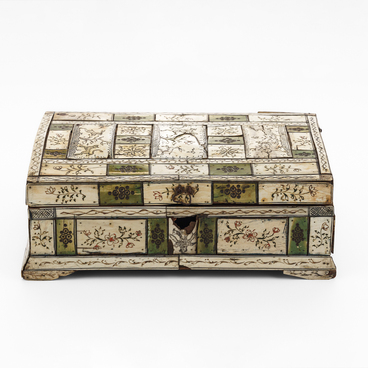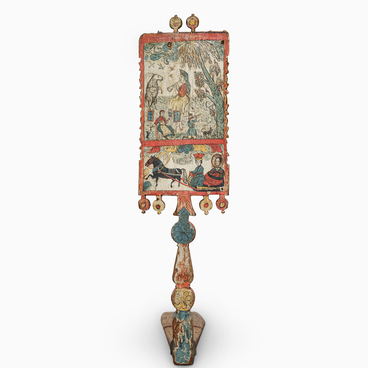The various artifacts of folk life, once kept in the collection of Princess Maria Klavdievna Tenisheva, included pryanik boards. These molds were made of wood from broadleaved trees and used for imprinting a pattern on a pryanik — a traditional Russian sweet treat.
Pryaniks have been popular in Russia since ancient times. They have been associated with various rituals in the everyday life of the urban and rural populations. Weddings and funerals, fairs and festive meals, fun happenings and children’s games — no event could be imagined without pryaniks on the table. Spicy, fragrant, sweet, colorful pryaniks in the shape of animals, birds, fish, and butterflies were loved by children, because, in addition to their taste, they also resembled toys.
Pryaniks could be huge or very small, with a variety of patterns on them. Flowers, fish, birds, leaves — anything could inspire a carver who used a semi-oval chisel to carve nail-like patterns to a pryanik board.
Pryanik production was ubiquitous, but especially popular in Tver, Tula, Arkhangelsk and Vyazma.
Once this treat was called “honey bread”: it was baked using rye flour with honey and berry juice. In about the 13th century, when spices from the East began to be added to the dough, it became known as pryanik — from the Russian “pryany”, meaning “fragrant, spicy”.
Pryanik boards come in different shapes and sizes: one-piece boards for imprinting one image on one pryanik, composition boards with different images for several pryaniks, special boards for pryaniks with a filling and without it, as well as intricately shaped boards for special pryaniks.
Pryanik boards made by carvers of the 19th century are composition boards: one such board is a mold for applying a pattern on a specific number of small pryaniks. The board, presented in the Museum of Russian Heritage features 16 rectangular carved stamps with images of flowers, birds, and fish. There are boards with nine sections with images of a horse, fish, and a peacock. Other molds can be attributed to boards for honorary pryaniks — “grace” and “congratulatory” boards. A characteristic feature of these boards is the image of a double-headed eagle.
Pryaniks with patterns on them were significantly more expensive than ordinary ones, because for their manufacture it was necessary to employ a carver. Making boards for such treats was a true art. It was especially difficult to carve letters and numbers: the letters had to be written backwards. To cut out a drawing in counter-relief, the master must have outstanding spatial thinking.
The boards were made of soft woods — pear, linden, willow, alder, and less often aspen.


